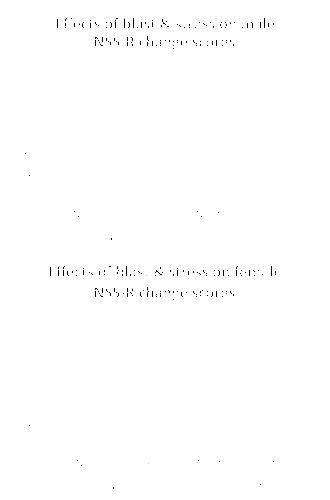Angela M. Yarnell, Erin S. Barry, Andrea Mountney, Deborah Shear, Frank Tortella, Neil E. Grunberg
下载PDF
{"title":"啮齿动物神经行为严重程度量表(NSS-R)修订","authors":"Angela M. Yarnell, Erin S. Barry, Andrea Mountney, Deborah Shear, Frank Tortella, Neil E. Grunberg","doi":"10.1002/cpns.10","DOIUrl":null,"url":null,"abstract":"<div>\n \n <p>Motor and sensory deficits are common following traumatic brain injury (TBI). Although rodent models provide valuable insight into the biological and functional outcomes of TBI, the success of translational research is critically dependent upon proper selection of sensitive, reliable, and reproducible assessments. Published literature includes various observational scales designed to evaluate post-injury functionality; however, the heterogeneity in TBI location, severity, and symptomology can complicate behavioral assessments. The importance of choosing behavioral outcomes that can be reliably and objectively quantified in an efficient manner is becoming increasingly important. The Revised Neurobehavioral Severity Scale (NSS-R) is a continuous series of specific, sensitive, and standardized observational tests that evaluate balance, motor coordination, and sensorimotor reflexes in rodents. The tasks follow a specific order designed to minimize interference: balance, landing, tail raise, dragging, righting reflex, ear reflex, eye reflex, sound reflex, tail pinch, and hindpaw pinch. The NSS-R has proven to be a reliable method differentiating brain-injured rodents from non-brain-injured rodents across many brain injury models. © 2016 by John Wiley & Sons, Inc.</p>\n </div>","PeriodicalId":40016,"journal":{"name":"Current Protocols in Neuroscience","volume":"75 1","pages":""},"PeriodicalIF":0.0000,"publicationDate":"2016-04-08","publicationTypes":"Journal Article","fieldsOfStudy":null,"isOpenAccess":false,"openAccessPdf":"https://sci-hub-pdf.com/10.1002/cpns.10","citationCount":"29","resultStr":"{\"title\":\"The Revised Neurobehavioral Severity Scale (NSS-R) for Rodents\",\"authors\":\"Angela M. Yarnell, Erin S. Barry, Andrea Mountney, Deborah Shear, Frank Tortella, Neil E. Grunberg\",\"doi\":\"10.1002/cpns.10\",\"DOIUrl\":null,\"url\":null,\"abstract\":\"<div>\\n \\n <p>Motor and sensory deficits are common following traumatic brain injury (TBI). Although rodent models provide valuable insight into the biological and functional outcomes of TBI, the success of translational research is critically dependent upon proper selection of sensitive, reliable, and reproducible assessments. Published literature includes various observational scales designed to evaluate post-injury functionality; however, the heterogeneity in TBI location, severity, and symptomology can complicate behavioral assessments. The importance of choosing behavioral outcomes that can be reliably and objectively quantified in an efficient manner is becoming increasingly important. The Revised Neurobehavioral Severity Scale (NSS-R) is a continuous series of specific, sensitive, and standardized observational tests that evaluate balance, motor coordination, and sensorimotor reflexes in rodents. The tasks follow a specific order designed to minimize interference: balance, landing, tail raise, dragging, righting reflex, ear reflex, eye reflex, sound reflex, tail pinch, and hindpaw pinch. The NSS-R has proven to be a reliable method differentiating brain-injured rodents from non-brain-injured rodents across many brain injury models. © 2016 by John Wiley & Sons, Inc.</p>\\n </div>\",\"PeriodicalId\":40016,\"journal\":{\"name\":\"Current Protocols in Neuroscience\",\"volume\":\"75 1\",\"pages\":\"\"},\"PeriodicalIF\":0.0000,\"publicationDate\":\"2016-04-08\",\"publicationTypes\":\"Journal Article\",\"fieldsOfStudy\":null,\"isOpenAccess\":false,\"openAccessPdf\":\"https://sci-hub-pdf.com/10.1002/cpns.10\",\"citationCount\":\"29\",\"resultStr\":null,\"platform\":\"Semanticscholar\",\"paperid\":null,\"PeriodicalName\":\"Current Protocols in Neuroscience\",\"FirstCategoryId\":\"1085\",\"ListUrlMain\":\"https://onlinelibrary.wiley.com/doi/10.1002/cpns.10\",\"RegionNum\":0,\"RegionCategory\":null,\"ArticlePicture\":[],\"TitleCN\":null,\"AbstractTextCN\":null,\"PMCID\":null,\"EPubDate\":\"\",\"PubModel\":\"\",\"JCR\":\"Q2\",\"JCRName\":\"Neuroscience\",\"Score\":null,\"Total\":0}","platform":"Semanticscholar","paperid":null,"PeriodicalName":"Current Protocols in Neuroscience","FirstCategoryId":"1085","ListUrlMain":"https://onlinelibrary.wiley.com/doi/10.1002/cpns.10","RegionNum":0,"RegionCategory":null,"ArticlePicture":[],"TitleCN":null,"AbstractTextCN":null,"PMCID":null,"EPubDate":"","PubModel":"","JCR":"Q2","JCRName":"Neuroscience","Score":null,"Total":0}
引用次数: 29
引用
批量引用


 求助内容:
求助内容: 应助结果提醒方式:
应助结果提醒方式:


